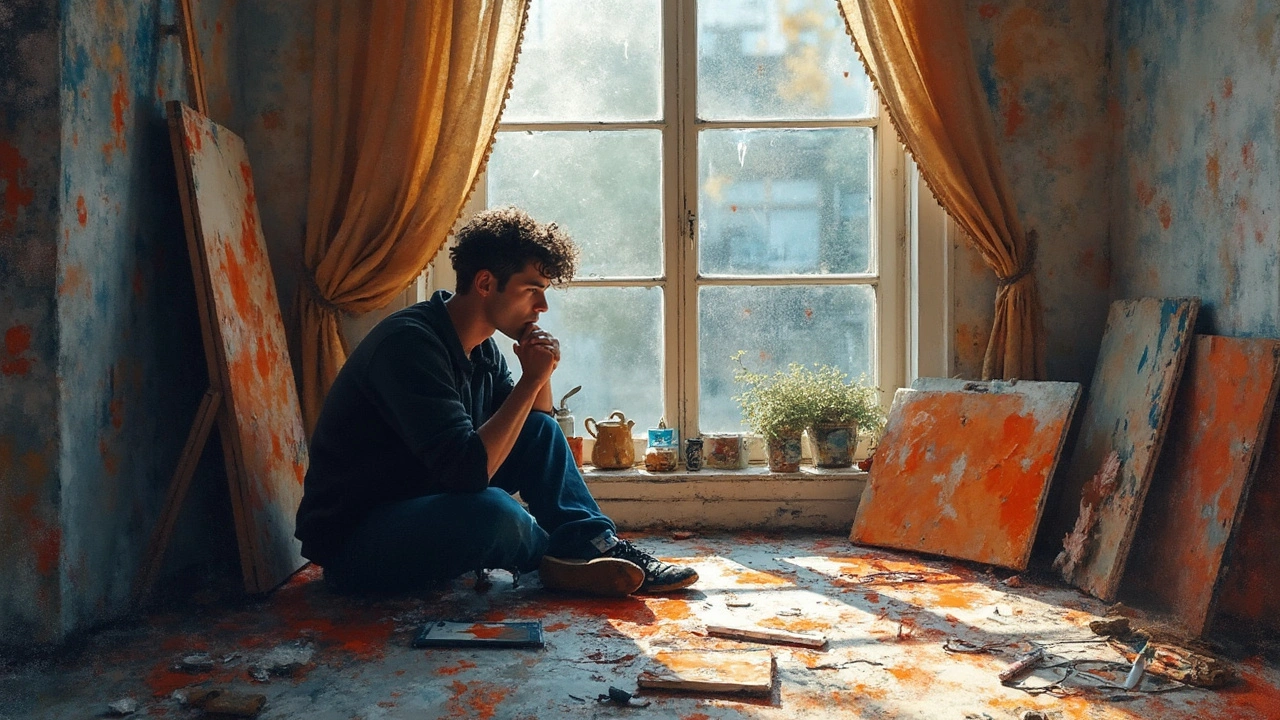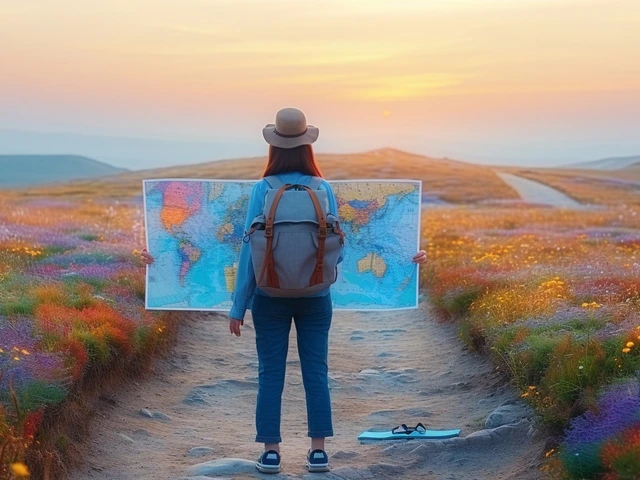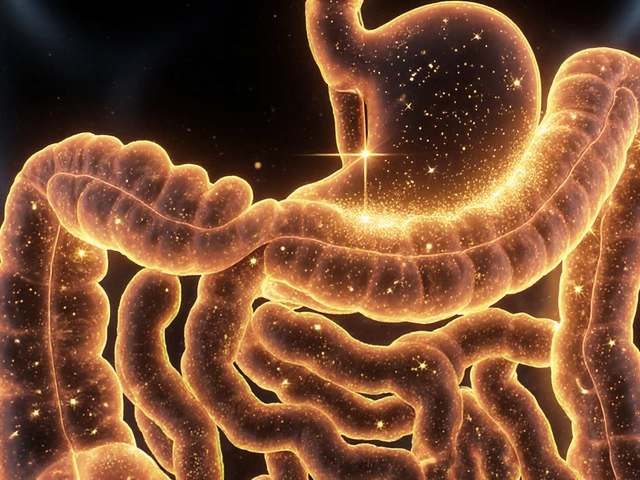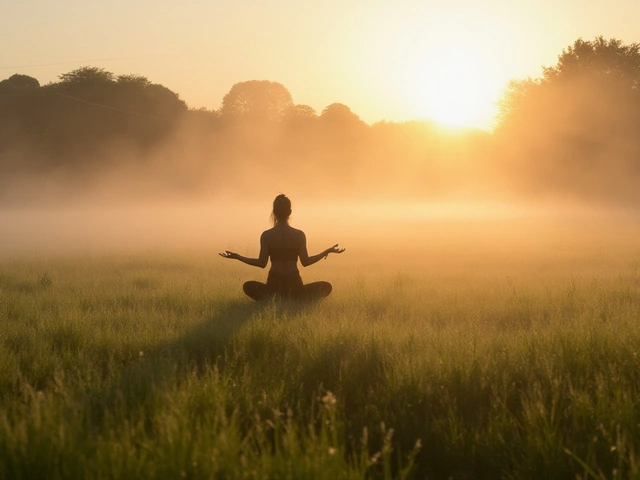If you ever heard someone say, “Artists are all a little crazy,” you’re not alone. There’s this old idea that struggling with your mind somehow makes you more creative. But is that really true, or just a stereotype that’s gotten out of hand?
Creative people—musicians, painters, even entrepreneurs—often open up about their mental health battles. But the relationship between creativity and mental health isn’t just about pain or chaos. It’s way more complicated, and actually, your mental state can shape your ideas in both good and not-so-good ways.
The thing is, when your mind feels balanced and well, it’s way easier to brainstorm, work through problems, and actually finish what you start. If you’re stuck in constant stress or low moods, it gets tougher to focus and see possibilities. Some people do get bursts of creative energy during rough times, but that’s not the same as those ideas being sustainable or healthy in the long run.
- The Real Link Between Mental Health and Creativity
- Breaking Myths: Do You Need to Suffer to Be Creative?
- How Stress and Anxiety Affect Creative Thinking
- Habits that Support Both Mood and Ideas
- Getting Help: Keeping the Balance Between Inspiration and Wellbeing
The Real Link Between Mental Health and Creativity
People talk about creativity and mental health like they’re locked together. It’s not all talk; there’s actually some real science behind this. Researchers at the Karolinska Institute in Sweden looked at over a million people and found that writers and artists were more likely to have mental health struggles like depression or anxiety than folks in other jobs.
But here’s the thing—having a rough time doesn’t automatically make someone a creative genius. What studies show is that certain mental states can shake up ordinary thinking patterns and make you see things in a fresh way. On the flip side, when symptoms get severe—think major depressive episodes or high anxiety—it often kills focus, motivation, and energy, which are all key to acting on new ideas.
You might wonder: why do so many creative people face these challenges? It could be a bit of brain wiring. Some scientists have found that creative people tend to score higher on something called "openness to experience." This trait means you notice more, feel more, and think continually. That’s great for brainstorming but can make you more sensitive to stress.
Here’s a breakdown to make the connection a bit clearer:
| Creative Areas | Common Mental Health Patterns |
|---|---|
| Writers | Higher depression, anxiety, bipolar |
| Musicians | Higher anxiety, mood swings |
| Painters/Visual Artists | More mood disorders |
When people feel mentally well, they’re more likely to turn sparks of ideas into actual projects and stick with them. If you want to boost your mental health and creativity together, focus on sleep, regular connection with others, and giving yourself downtime. The myth that you have to be a "tortured artist" is just that—a myth. Most creative breakthroughs come when your brain isn’t at war with itself, but working for you.
Breaking Myths: Do You Need to Suffer to Be Creative?
This myth—that you need pain or chaos to be creative—shows up everywhere, from movies to social media. People point to Van Gogh’s struggles or Sylvia Plath’s poems and think real inspiration only comes from tough times. But research says otherwise.
Studies from the last ten years show that while people who work in the arts do report higher rates of anxiety and depression, most creative bursts happen during periods of mental stability, not crisis. The Journal of Creative Behavior published a study in 2018 that tracked 200 writers and found they finished projects faster and with more originality when their mental health was solid, not when they were in a slump.
Look at the numbers:
| State of Mind | Average Ideas per Month |
|---|---|
| Good Mental Health | 15 |
| High Stress/Depression | 7 |
Here’s the kicker: struggling with mental health doesn’t magically make you creative. Sure, some might create art as a way to cope with emotions, but constant distress can block focus, drain energy, and make it hard to follow through on ideas.
- Having routines supports idea generation.
- Getting enough sleep and moving your body clears your mind for better brainstorming.
- Sharing your work with others—without fear of judgment—often boosts both mood and originality.
If someone says you need to be "a tortured soul" to make good art, that’s just not true. Most people do their best work when they feel safe, supported, and mentally steady. A healthy mind fuels creativity for the long haul.
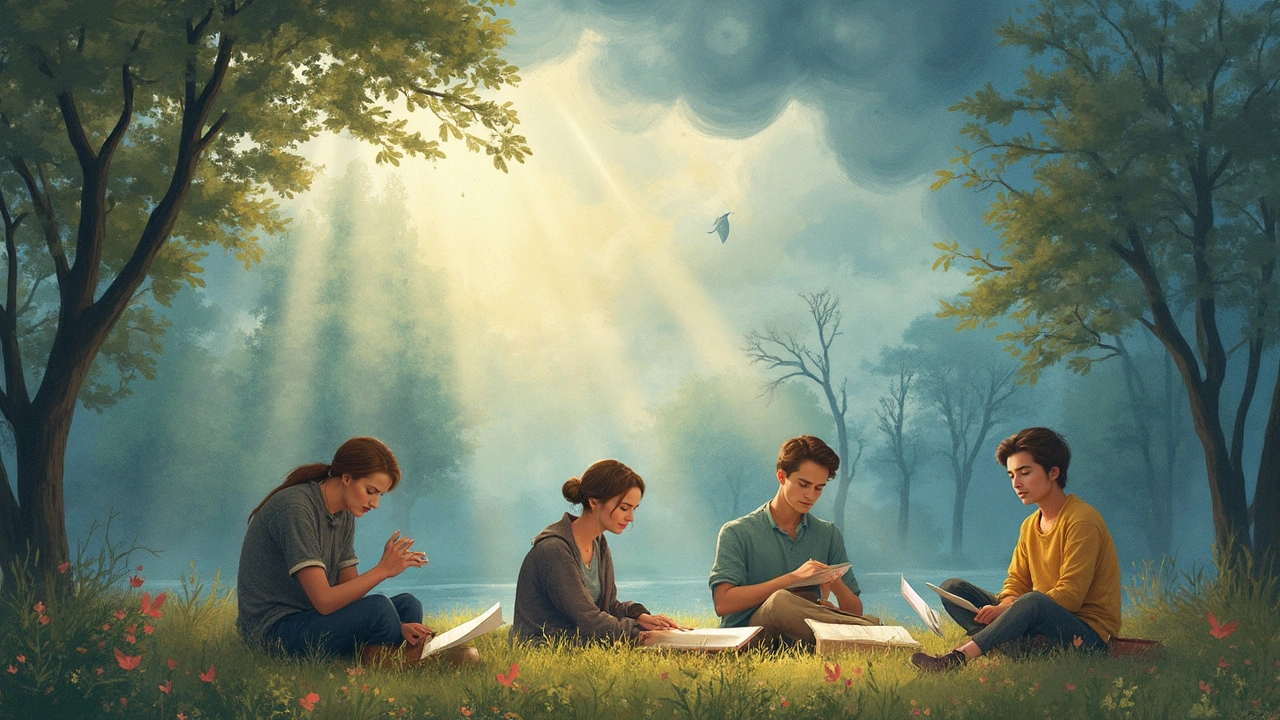
How Stress and Anxiety Affect Creative Thinking
If your mind feels like it’s spinning with worries, coming up with creative ideas isn’t easy. Stress and anxiety can mess with how your brain works, and that spills over into your ability to solve problems or come up with new stuff.
Here’s what’s going on. When you’re stressed, your brain shifts focus to survival mode. You start looking out for threats, not looking for fresh ideas. A 2022 study from Stanford found that people under pressure struggle more with tasks that need imagination or thinking outside the box. Anxiety works much the same way. It’s like your brain is on a loop of “what ifs” and fear, which can make it hard to break away and find new angles or solutions.
But there’s a twist. Some people say they get their best ideas during tough times. That’s usually because stress boosts adrenaline, which can give you short bursts of energy or sharp thinking. But this doesn’t last. Too much stress over the long haul actually hurts your ability to be creative. Your brain gets tired, your thoughts slow down, and it gets harder to connect the dots between ideas.
- Short-term stress: Might give you a quick flash of insight or push you to finish a project—but it fades fast.
- Long-term stress: Usually kills creative thinking because it makes it harder to focus, remember details, or even feel curious about new things.
If you want to keep your mental health in check and your ideas flowing, watch for early signs of stress, like feeling stuck or snapping at people for no reason. Don’t ignore those signs—changing small habits early can make a big difference. Even something simple like taking your dog for a walk, like I do with Biscuit, helps reset your brain so you’re not just spinning in circles.
Habits that Support Both Mood and Ideas
Cultivating habits that boost your mood also makes a big difference in how creative you feel day to day. The brain works best when you treat it well, and that’s not just some motivational saying—that’s backed by science.
Research from Stanford University shows that going for a walk can boost creative output by up to 60%. If you’ve ever had your best ideas while walking your dog (I’m looking at you, Biscuit), you’re not imagining it.
- Mental health matters. Simple actions like sticking to a regular sleep schedule, eating real food (less sugar, more veggies), and getting daily movement push your brain into a space where good ideas show up more often.
- Try a brain dump. At the end of the day, write down everything swirling in your head. This clears space for new ideas.
- Limit tech overload. Taking breaks from screens—even for 30 minutes—lets your mind wander and notice new connections, which is basically the whole point of creativity.
- Connect with others. Regular chats (even online ones) help keep your mood steady and expose you to fresh perspectives.
Don’t forget to build in downtime. Even ten minutes a day doing absolutely nothing (just staring out the window) helps your mind recharge. Netflix binges don’t count—your brain needs actual quiet sometimes.
| Habit | Brain Benefit |
|---|---|
| 7-8 hours sleep/night | Improved problem-solving & mood |
| 30 min of walking | Up to 60% jump in creative output |
| Daily journaling | Less stress, clearer thinking |
| Healthy meals | More energy (fewer mood crashes) |
| Time offline | More spontaneous ideas |
Small changes stack up. Better mood? Check. More creative sparks? Double check. There’s no perfect routine—just find what lights up your brain and fits your real life.
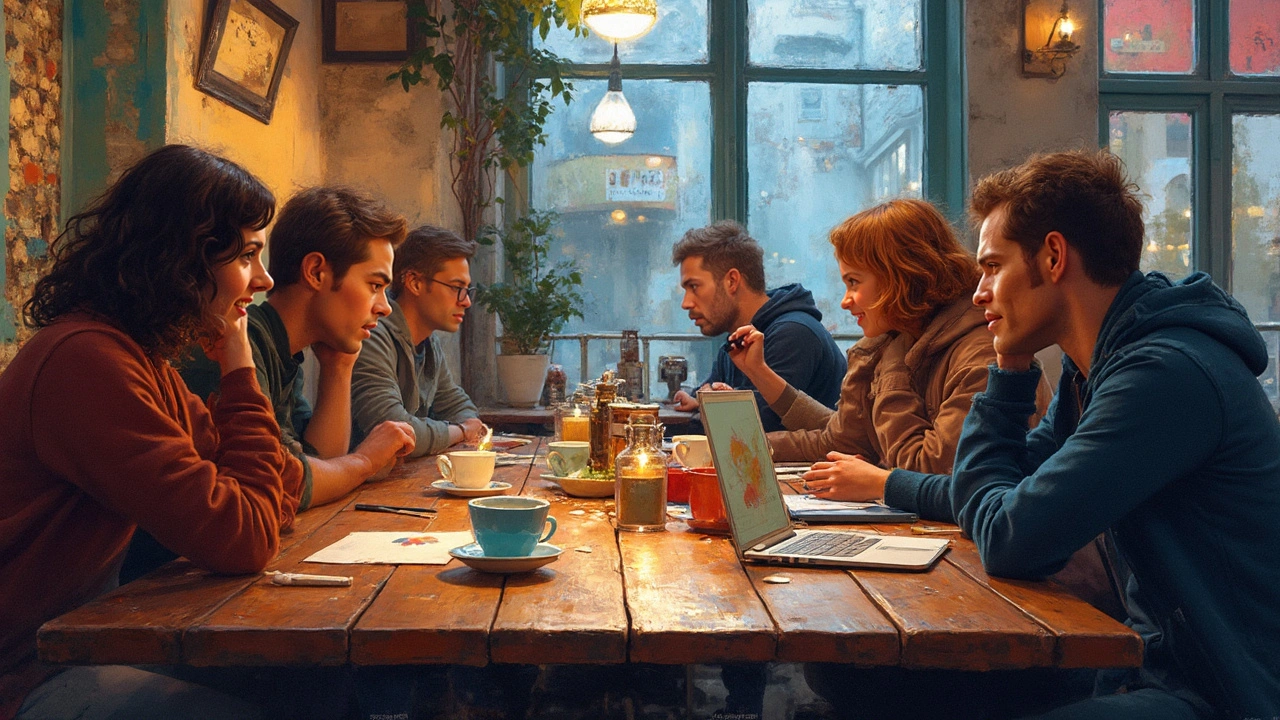
Getting Help: Keeping the Balance Between Inspiration and Wellbeing
Lots of creative folks avoid getting help because they’re worried it’ll mess with their process. But here’s the deal: looking after your mental health makes it way easier to keep making cool stuff for the long haul—and you don’t have to give up your spark to do it.
You don’t need to figure everything out on your own. Therapy isn’t only for those in a crisis; even regular check-ins, like talking to a counselor or joining a support group, can make a huge difference. According to the American Psychological Association, about 75% of people who try therapy say they benefit from it. That’s a pretty strong number for anyone who’s unsure if it works.
Some people also worry that medication will flatten out their emotions and kill their creativity. Most modern meds, especially when prescribed carefully, aim to steady your mood, not dull your mind. Doctors suggest working closely with mental health pros, because everyone reacts differently and there’s rarely a one-size-fits-all solution.
If you want to support your mood and ideas, try these steps:
- Stick to a daily routine—even something basic like getting up at the same time and walking Biscuit (my dog never lets me forget, anyway).
- Take breaks from work. Even 10-15 minutes away from your screen or project helps your brain reboot.
- Stay social. Grab coffee with a friend or chat online, especially when you feel stuck or isolated.
- Move your body. You don't need a gym; even a walk around the block is a great reset.
- Set realistic goals so you don’t overload yourself. That way you actually finish things instead of burning out.
Want to see what works for others? Check out this quick overview of help-seeking and benefits among creative people:
| Action | Reported Benefit | Percentage |
|---|---|---|
| Counseling/Therapy | Improved mood, more stable productivity | 75% |
| Regular breaks and exercise | Higher creative output, better focus | 67% |
| Peer Support Groups | Less isolation, fresh ideas | 52% |
The biggest takeaway? Caring for your brain is good for you and your work. The best ideas come when you’re not running on empty.

